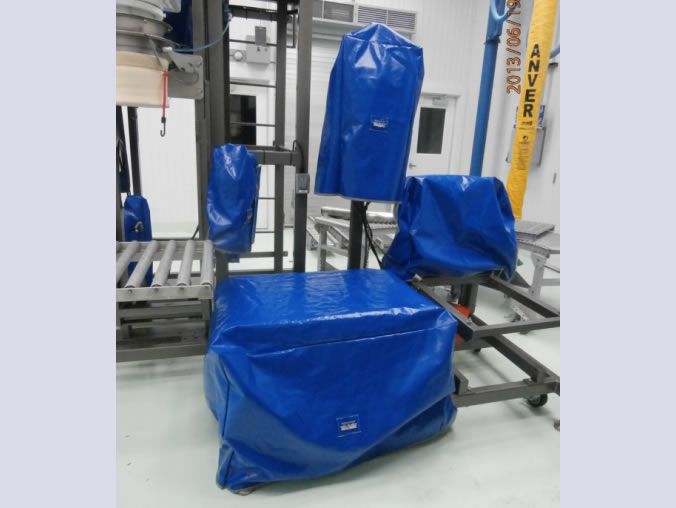According to the Environmental Protection Agency, 16 percent of methane emissions come from landfills. Reducing the amount of waste (e.g., insulation, plastic) sent to landfills can help mitigate the human contribution to climate change. Think of the following situations. Hard-coated insulation removed from components to perform maintenance and then thrown away. Duct tape, plastic wrap and contractor bags used as one-time protective measures during processes like washdown in pharmaceutical and food processing facilities. Shannon Global Energy Solutions’ thermal and acoustic reusable insulation blankets and Rain Shields reduce this kind of waste, while playing a role in zero-waste initiatives.
Fiberglass insulation, for instance, is often thrown away if damaged or removed. Shannon’s reusable insulation blankets are designed and made to be easily replaced on a component after conducting maintenance or repairs. The Shannon reusable insulation blanket is manufactured to exacting standards and specifications, including more durable materials than traditional insulation, so it lasts 15 years or more. The longevity and reusability mean a Shannon blanket eliminates the cycle of removing, throwing away and buying new non-reusable insulation and protective shields.
Rain Shields for washdown
When maintenance workers clean production lines equipped with sensitive components like sensors, many companies (especially the ones processing a variety of dairy products and plant-based milks) use chemical washdowns. Cameras, servomotors and other components are covered with taped plastic bags that are then disposed of after use. Shannon Rain Shields, designed to fit each component they’re placed on, eliminate the chore of repeatedly taping and covering components and the waste that ends up in landfills.
“In a study examining the life cycle impact of using a Shannon Rain Shield versus taped plastic,” said Frank Kovacs, CEO of Shannon, “we showed that eliminating labor to constantly wrap and tape sensitive equipment like cameras, servomotors and sensors – that would be exposed to washdown conditions – saved $100,000, and the waste savings were in the tons over a 15-year timeline.”
For any company looking to reduce waste or start a zero-waste initiative, reusable insulation and the Rain Shield are a smart step, easily carried out. While more expensive to implement than traditional insulation techniques, the total cost of ownership both for the reusable insulation buyer and environment ultimately recoups any initial outlay many times over. Most companies see a payback period of less than 24 months.
“Zero waste initiatives start with the simple elements of best practices, so why use plastic tape, when you can reuse a functional, user-friendly protective enclosure,” said Kovacs. “The benefits far outweigh the initial cost.”

